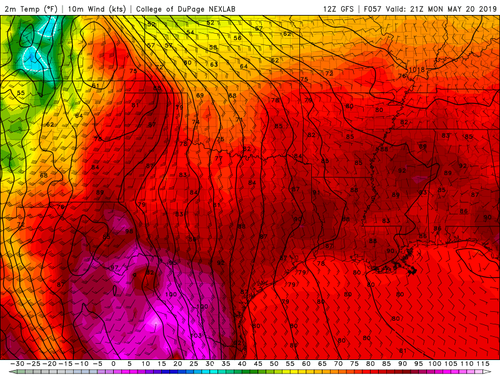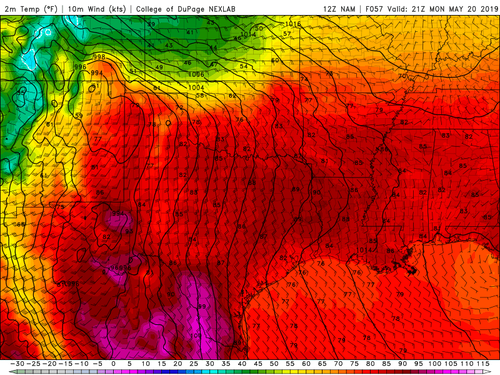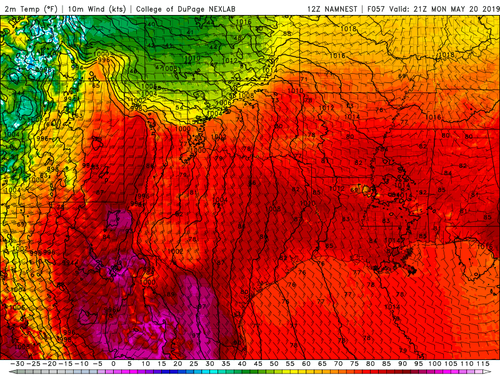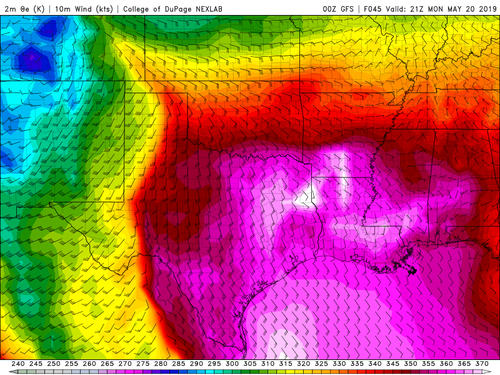On the synoptic scale, this event has consistently appeared as a potentially high-end event. A broad trough across the W CONUS with a backloaded jet core (i.e., concentrated on the western side of the trough) has persisted in the forecast, and a subtle embedded shortwave appears to swing over the southern Plains with a negative tilt that is pretty well timed for Monday. SW mid-level jet winds approaching 70 kts combined with mostly due S 850 winds at 40-50 kts makes for some incredible mid-level shear. Low-level flow out of the SE across OK makes for a hell of a kinematic environment. Quality moisture will be present, but as of now, there are questions as to whether we will only see mid-upper 60s dews or Tds exceeding 70 F in the warm sector.
What appears to be a major limiting factor with this environment is diurnal convection to screw up the thermodynamic and kinematic environment. There are lots of signs of overnight/early morning convection developing in "the chase killer zone" of WC TX in the 06-12Z time frame. This makes sense given the strong large-scale forcing ahead of the approaching shortwave combined with rapid and sudden moisture return and WAA in the area the night before. What makes this happen is that the EML coming from the source region just isn't that warm for this time of year - 700 mb temps only get to 10-12 C in S TX/NM and northern Mexico preceding this event. That's just not going to be enough to restrict early convective development.
Whether this morning convection verifies remains to be determined (although I don't see much reason for it not to), but the extent, timing, and intensity of the cold pools/stabilization it leaves in its wake will largely determine the spatial and intensity extent of this event. If morning convection is minimal or gets out of the way quickly enough, there would be more time for recovery/destabilization and this could end up being a significant severe weather outbreak.
What appears to be a major limiting factor with this environment is diurnal convection to screw up the thermodynamic and kinematic environment. There are lots of signs of overnight/early morning convection developing in "the chase killer zone" of WC TX in the 06-12Z time frame. This makes sense given the strong large-scale forcing ahead of the approaching shortwave combined with rapid and sudden moisture return and WAA in the area the night before. What makes this happen is that the EML coming from the source region just isn't that warm for this time of year - 700 mb temps only get to 10-12 C in S TX/NM and northern Mexico preceding this event. That's just not going to be enough to restrict early convective development.
Whether this morning convection verifies remains to be determined (although I don't see much reason for it not to), but the extent, timing, and intensity of the cold pools/stabilization it leaves in its wake will largely determine the spatial and intensity extent of this event. If morning convection is minimal or gets out of the way quickly enough, there would be more time for recovery/destabilization and this could end up being a significant severe weather outbreak.




